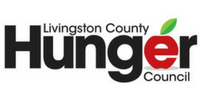- 01
- Jul
- 2019
HSCB Hunger Fact Sheet
- Posted ByAdmin
- InUncategorized
LIVINGSTON COUNTY HUMAN SERVICES COLLABORATIVE BODY
Health and Human Service Needs
Download Fact Sheet Here
What is “food insecurity”? A person who is food insecure struggles at times to put
enough nutritious food on the table. A family runs out of food days or weeks before there will be
any money to buy more. Parents may skip meals or eat less than is nutritionally required, to
make more food available for their children. People are hungry, but eat less to stretch the
available food over a few more days. And only half of food insecure individuals in
Livingston County qualify for the government Food Assistance Program (FAP).
Why is this issue so important to Livingston County? Having enough
nutritious food is critical to living a healthy active life. A diet poor in nutrition leads to lifelong
health complications such as obesity, diabetes, high cholesterol, high blood pressure, and heart
disease. Costs to the community are high – treatment, lost productivity, hospitalizations, etc. A
2010 study, “The Economic Costs of Domestic Hunger” reports the negative impact of
hunger to our nation at $167.5 billion. That is $542 for every person or $1,410 per
household in costs over and above the cost of government food programs.
Addressing hunger is especially important to our youngest children, as a lack of food and poor
nutrition can have permanent and devastating effects on their development. Kids can’t learn
when they are hungry. They can’t sleep. They have no energy. They can’t function. And even
more alarming, poor nutrition actually interferes with proper brain development, 85% of which
happens before the child reaches kindergarten age.
What is the impact locally?
- 13,790 Food insecure Livingston County residents, including 4,380 children
(Map the Meal Gap 2019) - 6,453 Livingston County residents on government Food Assistance Program
- 65% Portion of FAP households with children, seniors, or disabled persons
- 5,672 Livingston County students eligible for free or reduced lunch (2018-2019)
- 2 million Pounds of food distributed annually by Gleaners in Livingston County
What programs & services exist?
The Livingston County Hunger Council is a coalition of individuals, businesses, and
organizations, committed to building a community-based food system where all can thrive.
Over the last several years, the Council has significantly . . .
- Improved access to fresh produce
- Promoted nutrition education and healthier food choices
- Increased capacity and coordination of the food pantry network
- Closed the gap of over 5 million meals to become the first “food secure” county
in the State of Michigan
